Love Birds: Monogamous Creatures Of The Bird Kingdom
Have you and your other half ever been termed as Lovebirds? If you didn't already know, this term is widely used as a descriptive word to mean, a lovey-dovey couple. Lovebird is also the name to a popular choice of pet Bird, and we are going to reveal how and
The Lovebird
There are a total of 9 species, namely categorized via plumage, and region of origin. 8 species of the Lovebird originate from Africa, and 1 specifically from Madagascar. In Singapore and other countries, the 3 common species of Lovebirds favoured as pets would be the Peach or Rosy-Faced Lovebird, Masked Lovebird, and Fischer’s Lovebird.
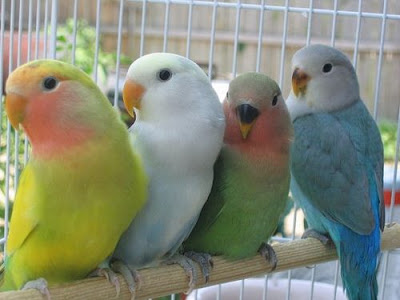 |
| Source |
Why are they
called Lovebirds?
Here we lay out top FOUR reasons that deem these feathered creatures the epitome of Love, in the Birdie Kingdom.
1. Monogamy — You can almost never see
a Lovebird that is kept in a cage alone, they are most often kept in pairs. At the sexual maturity age of only 10 months, a Lovebird would have most likely stuck themselves to one other
Lovebird— and they are a monogamous couple for life. Indeed, they are known to have the same mating partner for the entire lifespan of 10 to 15 years, much like a loving old couple (say, Awww).
 |
| Source |
2. The Fear Of Being Alone — Although some owners
prefer building a close personal relationship by keeping just one Lovebird, it has been strongly advised to keep them in pairs. Lovebirds are known to thrive better
with a partner, and they often display signs of depression or even odd changes in behaviour— Mostly from loneliness, or by being separated from their mate.
3. Affection — Lovebirds are
reported to have the ability to recognize their mates. After being reunited, they
display their affections by feeding one another, as means of rebuilding their
long lost bond. Even during mating period, they are mostly seen feeding their
mates.
This looks a lot like kissing, don’t you think? J
This looks a lot like kissing, don’t you think? J
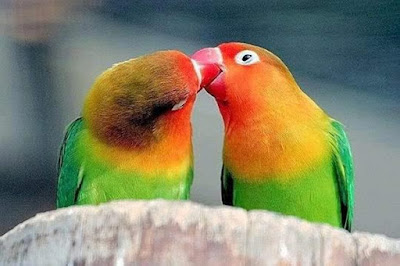 |
| Source |
4. Jealousy — On the off-set chances where Lovebirds get a little aggressive, is usually due to territorial behavior. They love having their own space and homes, often seen attacking another whom invaded their privacy. While experts call it protective behaviour, we'd like to think this could be a slight display
of jealousy too.
Appearances Of Lovebirds
The Lovebird looks like a tiny parrot. As compared to a Budgerigar, Lovebird bodies are much stockier, varying from 13 to 17 cm in length, weighing 40 to 60 grams— They also have larger bills. Some of the common pet Lovebirds are as such:
Peach/Rosy face — Spots a peachy shade on the faces, followed by a body of yellow or green plumage.
Masked Lovebird — Noticeable by their black faces, which gives them the appearance of “wearing a mask". Common feather plumages are yellow and green with red bills, or white and blue with pink bills.
Fischer’s Lovebird — Beautiful gradient of orange face, yellow breast and overall green plumage, with red bills and white ringed eyes.
Currently a vast colouration of Lovebirds are available, as seen on the diagram below. Breeding has enabled more colour combinations for each species.
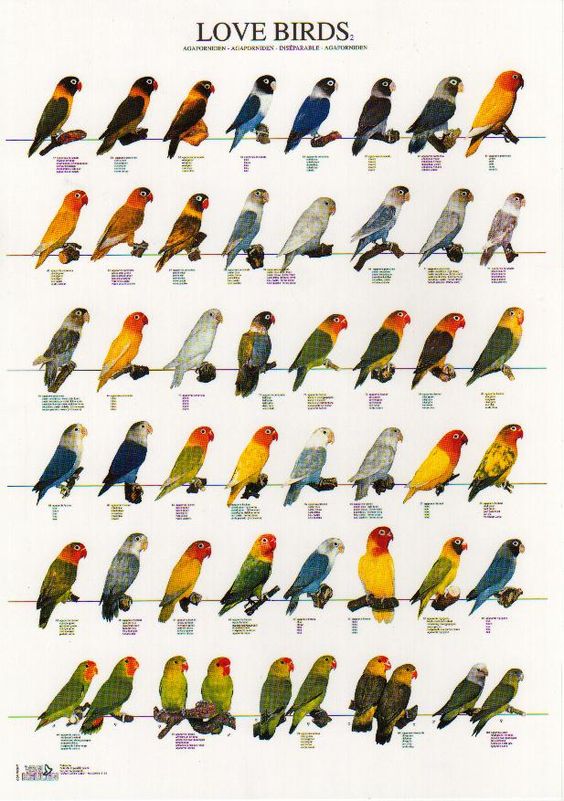 |
| Source |
Personality Of Lovebirds
Being a excellent and loyal lovers to their partners is just one of the amazing traits of a Lovebird. They make a popular choice of pet Birds for many because of their ability to learn tricks. Owners find it a rewarding experience, but good results only derive from the level of attachment and effort you put into your Lovebirds! After a bond between owner and pet has been established, Lovebirds remain loyal not only to their partners, but also to their owners.
 |
| Source |
A pair of Peach Face
Lovebirds were able to perform tricks and were allowed to roam freely, only
upon their owner’s call do they respond and take flight. We also learnt that having
seed treats come in handy whilst training a Lovebird (much like teaching a Dog
tricks). Lovebirds are also known to be
affectionate towards their owners, and they often enjoy a good neck scratch and
even some cuddling.
Housing and Food
Much like other parrot species, a good sized home is a must for a Lovebird, especially if they come in pairs, they can be active and require ample space to climb, hop, or perch. Lovebirds also like residing in holes, provide a little birdhouse and watch them pop in and out of the little hole. Be sure to include toys for entertainment.
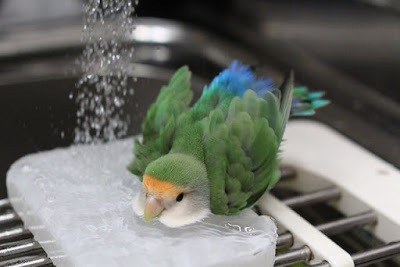 |
| Source |
Lovebirds in the wild
thrive on fruits and seeds, supply a good seed mixture for parrot breeds and fruit
or vegetable treat to supplement their nutritional needs. Ensure that their
cages are as clean as possible, plus a change of food and water every day.
Place a bathing dish with shallow water, large enough for them to splash and
get a nice dip as means of cleaning themselves. Otherwise, you can also bottle up some water in a spray-bottle and give them a good spritz!
You might also be interested in:
Your Stories Can Be Heard Too
Got a tip to share? We’d love to hear from you! Your voices are important to us and the Pets community! Our readers are encouraged to share their Pet-related reviews of a place and its services, experiences, even lifestyle tips and tricks to better our Pets lives, on our platform, one paw at a time. Be a part of an educational and informative Pets community because at ThePetsDialogue, your voices could make a huge difference on a global scale.
Write to us at [email protected] today!
Our website is a work in progress, however, if you did find our articles interesting please do feel free to share! For more Pet care tips and other Pet-related articles, head to www.thepetsdialogue.com ☺
Disclaimer
This article was written with informational purposes, as you know, we’d love to share our collective research and experiences as fellow Pet owners and lovers. It is not meant to alternate in any way as advice or diagnosis of Professionals.
ThePetsDialogue claims no credit for images posted on this article unless otherwise displayed/stated. All rights go to respective owners as mentioned. If you do not wish for your image(s) to appear here do drop us an e-mail and it will be removed promptly. If you do wish to use any of our original published information, you are welcome to contact us!




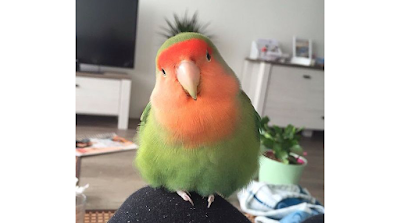
No comments:
Post a Comment